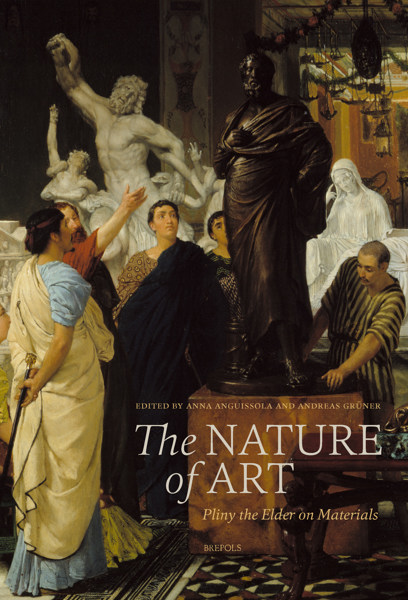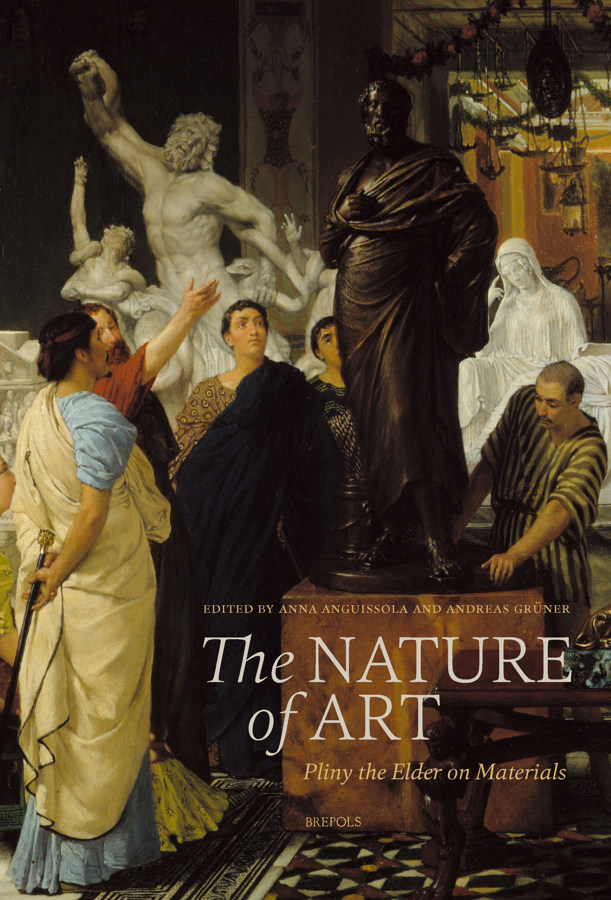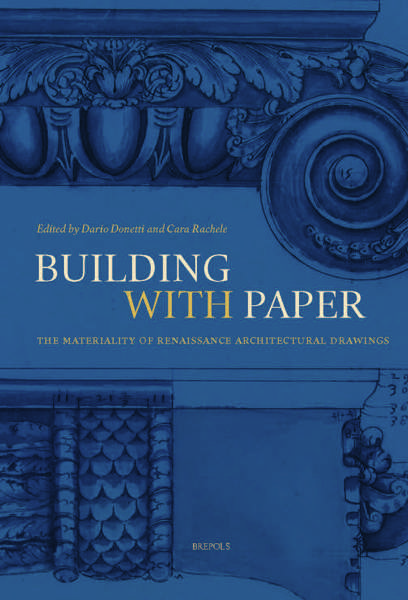
- Pages: 372 p.
- Size:180 x 265 mm
- Illustrations:80 col.
- Language(s):English
- Publication Year:2021
- € 125,00 EXCL. VAT RETAIL PRICE
- ISBN: 978-2-503-59117-9
- Hardback
- Temporarily Out of Stock
This volume addresses the presentation of artistic processes and their materials in the Natural History and focuses on the issues that lie at the root of Pliny's work: his account of the technological, economical, ideological, and aesthetic aspects of materials.
« Ce très beau livre de 372 pages s’intéresse au témoignage de Pline l’Ancien sur l’art à partir de la matérialité, les métaux, pierres et terres utilisés par les artistes et les processus de fabrication des œuvres (…) Pour conclure, il s’agit d’un ouvrage de très grande qualité pour le fond comme la forme, qui illustre parfaitement la complémentarité entre diverses disciplines et approches sur les textes antiques, et qui contribue au renouveau des études sur Pline l’Ancien et l’art. » (Valérie Naas, in Bryn Mawr Classical Review, 2022.08.11)
Andreas Gruener is Professor of Classical Archaeology at the Friedrich Alexander University of Erlangen-Nuremberg. His interests encompass Roman housing, iconography, and the history of the Classical tradition.
Anna Anguissola is Associate Professor in Classical Archaeology at the University of Pisa. Her research has focused on architectural technologies and urban development, as well as the history and techniques of ancient sculpture.
In his Natural History, Pliny the Elder organises his discussion of crafts according to the raw materials they utilize. However, scholarly literature has paid little attention to the aspect of materiality, preferring to focus on the biographies and achievements of ancient Greek artists. This collection instead addresses the presentation of artistic processes and their materials in the Natural History. This approach corresponds with current developments in the study of Greco-Roman art, wherein scientific analysis of artistic materials including stones, pigments, and metal alloys, as well as a deeper understanding of workshop practices, has imposed profound changes on the methods used in the study of ancient artefacts.
Editorial note and abbreviations
Introduction
Anna Anguissola and Andreas Grüner, Nature and Culture in the Natural History
Properties
Courtney Roby, Parasite, Infused: Pliny on Leeches
Annette Haug, Silver and Obsidian: Shine and Reflection
Julian Schreyer, Pliny on the Sensory Qualities of Tin
Verity Platt, Beeswax: The Natural History of an Archetypal Medium
Nadia J. Koch, Caeruleum and the Pigments of Greek Painting: A Comedy of Mistaken Identity
Simona Rinaldi, The Renaissance Reception of Pliny’s Atramentum
Processes
Giovan Battista Fidanza, Wood and Architecture: Pliny’s Legacy in the Treatises of Alberti and Cataneo
Clarissa Blume-Jung, Ganosis and Kosmesis in Pliny’s Natural History. On the Polishing of Marble Sculptures with Wax
Emily Margaret Cook, Pliny the Elder in the Workshop of Zenodorus and the Materiality of Facture in the Natural History
Elena Calandra, Material Substitutions. The Second Life of the Aphrodite anadyomene
Anna Anguissola, The Materiality of Creation. Integrity, Deception, and the Process of Art
Felix Henke, Gypsum, the Invention of Bronze Casting, and the Triumph of Form
Maria Luisa Catoni, Parian Marble and «Quella che si fa per forza di levare»
Nikolaus Dietrich, «Ex uno lapide» and the Meaning of Monolithic Sculpture in the Natural History
Values
Massimiliano Papini, Pretia and auctoritas rerum. Evaluation of Materials and Artefacts in Books 33-37
Hilary Becker, Grading for Colour: Pliny’s Hierarchy of Pigment Quality
Mathilde Bert, Plinian Monochromy in Renaissance Italy
Stefano Rocchi, Corinthian Bronzes and Vases from Pliny the Elder to Pliny the Younger (In the Light of a Passage by Cicero)
Lucia Faedo, Gilding. Art and Technique, Vision and Morals
Paolo Coen, Pliny, Stones in the Natural History, and their Re-use in the Trattato of Antonio Averlino, called Filarete (1462-1465)
Patrick R. Crowley, Factitious Gems and the Matter of Facts in Pliny’s Natural History
Semantics
Michael Squire, «Veritas repraesentata»? Zeuxis, Parrhasius, and the Nature of Pictorial Representation in Pliny’s Natural History
Jörn Lang, Purple Stones. Pliny on Amethysts
Maria Elisa Micheli, Agate: Fortunes and Misfortunes
Alexander Heinemann, Skin and Bone. Lala of Cyzicus and the Softness of Ivory
Carlo Berardi, Flawless Transparency: On Rock Crystal and its Fortune in the Middle Ages
Postface
Irving Lavin, Pliny’s History of Materials and its Readers:From «ex uno lapide» to Bernini’s figura serpentinata
Plates
Indices
Index of passages from the Natural History
Index of Greek and Latin sources
Index of relevant names and places


